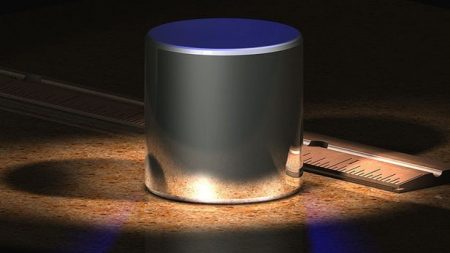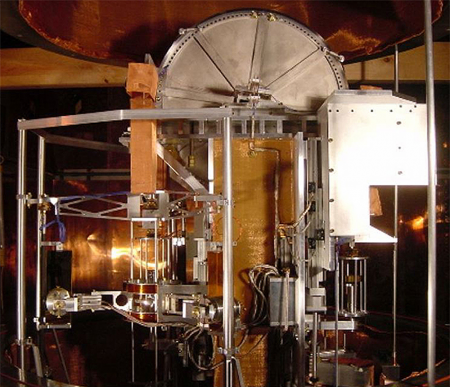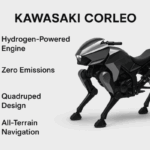November 19, 2018 – Humans like to measure things. From the Mesopotamians who measured everything in units of 6 giving us the 360-degree circle, to the Romans who introduced “miles” to our lexicon, we have been inventing new weights and measures to better understand the physical world around us.
Probably the first measure of length was defined by the hand. A person was so many hands tall. That ancient unit is still referred to when measuring horses. So what is a hand? Today it is standardized at 10.16 centimeters (4 inches), first adopted by England’s Henry VIII, and horses heights are still measured this way with the number of hands computed from the ground to the top of the animal’s shoulders (called the withers). Secretariat, considered by many to have been the greatest thoroughbred to win the Triple Crown stood 16.2 hands tall.
The idea of the foot as a unit of measure took the average size of another part of our anatomy to give us a way to judge distance. Yard came from measuring the circumference of an average waistline or three times the length of an average foot. Our mile from Roman times, 5,000 feet in length, became 5,280 feet to rationalize the discrepancies between measuring distances and areas. An acre was stated to be 660 by 60 feet. A patch of land Eight acres long equalled a mile. Don’t ask me why they chose 8 but in Elizabethan times this became the rule of measure.
Why do we measure things by weight? Early humans could pick a stone and make it their unit of measure. The weight of the stone they chose could be compared to the weight of something they were buying or selling. Eventually the stone became standardized. In Medieval England a sack of wool weighted 26 stones. Even today in Britain weights are still calculated in stones for both people and animals.
Pounds, on the other hand, came from the Romans. They called it pound a libra. It was divided into 12 unciae (the equivalent to the modern term ounce). Later on the pound grew to 16 ounces in dry-weight, and in wet, the quart. A quart was one-quarter of a gallon. And that’s another story.
But you can see how so much of this measuing was about commerce. We measured land. We measured goods. And we measured time.
The Metric System
Much of the world today uses a system invented by the post-revolutionary French in the 1790s. Few places on the planet don’t use it as their standard. Those few include the United States which uses the Imperial system of measurement it adopted from pre-revolutionary times. Even America’s progenitor, the British, have made an effort to use some metric measurements. The exceptions in Britain include pints instead of half-liters of beer, acres instead of hectares for land measurement, miles instead of kilometers in measuring distances, and Fahrenheit versus Celsius when measuring temperature.
Converting between metric forms of measurement and Imperial has proven troublesome. So much so that Jimmy Carter proposed the U.S. move to the metric system during his presidency. The idea, however, soon ran afoul of Congress and the general American public. The living with two types of measuring systems became an obvious problem after Carter on at least one occasion.
It was 1999 and the Mars Climate Orbiter launched successfully from Earth was about to complete its voyage to the Red Planet. The orbiter was the product of a joint venture between the Jet Propulsion Laboratory (JPL) in Pasadena and Lockheed Martin Astronautics in Denver. JPL used the metric system. Lockheed Martin used Imperial units. Neither group noticed the discrepancy. Lockheed Martin measured acceleration in pounds per second. JPL used units of force called newton-seconds. When it was time for the orbiter to decelerate into Martian orbit, the different units of measure led to disaster. At the time the Director of the George Washington University Space Policy Institute described the mistake as “so dumb,” not just because the engineers and scientists didn’t see the difference but also because of the $125 million dollars invested in the mission, and the priceless science that was lost.
Even when everyone is on the same page in measuring things, unforeseen problems can happen. Mating two different pieces of technology and software is a case in point. Another Martian story, the Schiaparelli lander in 2016 crashed when an onboard internal measuring system was improperly designed to deal with data being fed to it from its onboard guidance computer. The end result, landing rockets fired at the wrong time and a half-billion dollar mission went up in a puff.
The Story of the Kilogram
So how did the French come up with the metric system and ultimately the kilogram? France after the Revolution of 1789 was reinventing itself. The country was disconnected in so many ways and a strong sense of nation was growing. Regional measuring systems based on Roman and borrowed British units made internal trade challenging. The leaders of the country sought uniformity in measure as one way of creating national identity. So in 1795 they got French scientists and engineers together to come up a basis of measuring everything from distances to weights using the decimal system based on the number 10. That’s how the kilogram and a whole series of other units of measure came into existence, a standard called the Système International d’Unités, or SI. In Canada, we adopted SI in the late 1960s. We were latecomers to the metric system and still many Canadians think in pounds and ounces, and Fahrenheit degrees.
Coming up with an accurate definition for a kilogram took some doing. In fact it was four years after SI was adopted that the French created a standard. They defined a kilogram to be equal to the mass of 1,000 cubic centimeters of water just above the freezing point (4 Celsius or 39.2 Fahrenheit). Less than a century later with SI having been adopted around the world, a substitute for water was a cylinder of solid platinum. Then in 1889 it was superseded by a cylinder of platinum-iridium alloy. The problem with these physical weights was discovered when in 1989 it was discovered that the standard was losing weight, precisely 50 micrograms.

So instead of a physical artifact scientists sought a physical constant. In the last few weeks, scientists from 60 countries met in Versailles, France, and agreed to a change. The physical constant relates weight to electric current. By measuring an electric current related to weight using German physicist Max Planck’s constant, denoted by the symbol h using an accurate scale called the Kibble balance, a substitute for accurately determining the kilogram now exists based on a fundamental natural phenomenon: how the tiniest pieces of matter release energy in discrete units called quanta. The actual calculation is defined forever as 6.626 070 15 × 10-34 m2 kg/s. Anyone using a Kibble balance, a super accurate scale, can plug this formula in to accurately calculate mass in kilograms.
So no more stones, no more pounds, no more ounces. Instead, we now have quantum physics to guide us to a standard on weights. Linear measures on the other hand, still need some tinkering.









